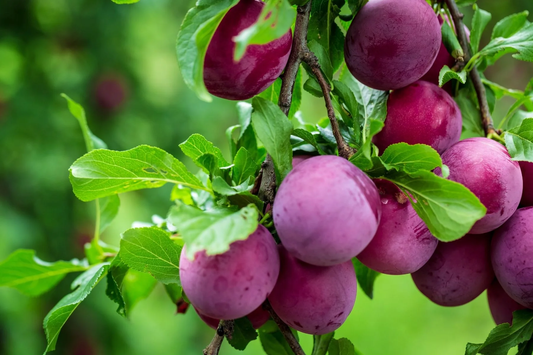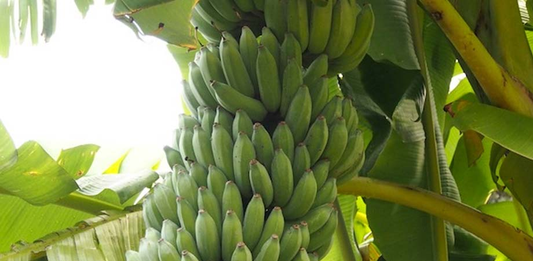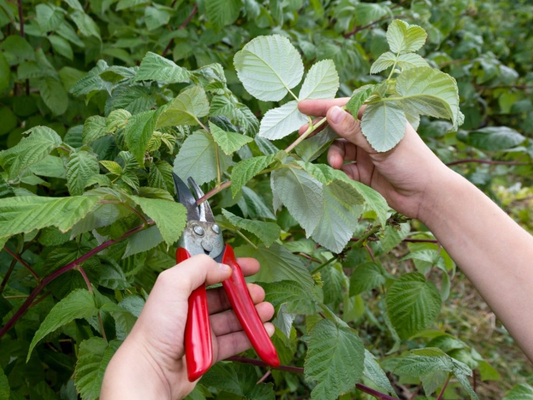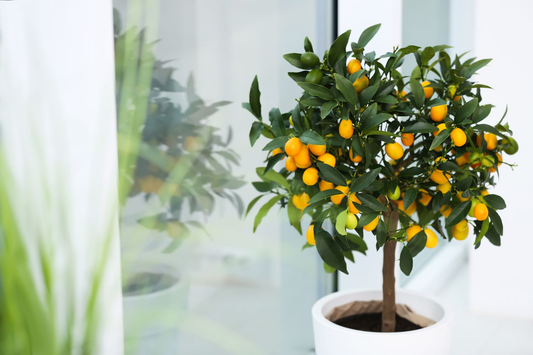Best Trees for Small Yards: Stylish Solutions for Limited Spaces
Share
- 1. Introduction
- 2. Why Choosing the Right Tree for a Small Yard Matters
- 3. Factors to Consider When Choosing Trees for Small Yards
- 4. Best Trees for Small Yards: Top Picks
- 5. Benefits of Planting Trees in Small Yards
- 6. How to Plant and Care for Trees in Small Yards
- 7. Creative Ideas for Incorporating Trees into Small Yards
- 8. Cost Considerations and Budget-Friendly Options
- 9. Common Mistakes to Avoid When Choosing Trees for Small Yards
- 10. Conclusion
- 11. Frequently Asked Questions (FAQ)
1. Introduction
Small yards can be a challenge for gardeners, especially when trying to make the most of limited space. While you may dream of a lush, expansive garden, working with a smaller yard requires a bit more creativity and careful planning. One of the key elements to consider when designing a small yard is the choice of trees. The right trees can add beauty, privacy, and even edible delights, all without overwhelming your space.
When selecting trees for small yards, it’s important to think about both the tree's size and its growth habits. Trees that grow too large can quickly dominate the space, casting too much shade or disrupting your yard's overall design. On the other hand, choosing compact trees that fit the scale of your yard can make all the difference. It's about finding a balance between form and function—trees that are both practical and aesthetically pleasing. In this guide, we will explore a variety of trees that are ideal for smaller spaces and offer stylish solutions for even the most limited outdoor areas.
Here’s what we’ll cover:
- Challenges of Small Yards: Why small yards require careful planning and how trees can help.
- Choosing the Right Trees: Key factors to consider when picking trees that suit your small space.
- Tree Options: A roundup of the best trees for small yards, with styles and benefits to suit different needs.
- Creative Tree Uses: How to incorporate trees into your small yard design for maximum impact.
By the end of this post, you’ll have a clear idea of how to select the perfect trees for your small yard, transforming it into a stylish, functional space that you’ll enjoy year-round.

2. Why Choosing the Right Tree for a Small Yard Matters
When working with a small yard, every decision counts. The right tree can make a world of difference, not only in terms of beauty but also in how the space functions. Trees are natural focal points, and choosing one that complements your yard's size and style can elevate its aesthetic appeal. But beyond aesthetics, trees also serve a variety of functional purposes that can enhance your overall outdoor experience.
How the Right Tree Enhances the Aesthetics and Functionality:
- Visual Appeal: A well-chosen tree can serve as the centerpiece of your garden, adding structure and depth to your design.
- Space Efficiency: Trees like columnar varieties and dwarf species can provide a lot of impact without overwhelming your space.
- Seasonal Interest: Trees with vibrant foliage, flowers, or fruits can change the appearance of your yard throughout the year.
Impact on Privacy, Shade, and Air Quality:
- Privacy: Trees can create natural barriers, providing privacy from neighbors or streets without the need for fences.
- Shade: Strategic tree placement can reduce heat in your yard, offering a cool, shaded spot to relax on sunny days.
- Improved Air Quality: Trees absorb carbon dioxide and release oxygen, improving the air quality around your home.
Avoiding Common Mistakes When Selecting Trees:
- Overlooking Growth Size: One of the biggest mistakes is planting a tree without considering its mature size, which can lead to overcrowding.
- Ignoring Root Systems: Some trees have aggressive roots that can damage nearby structures or gardens.
- Choosing High-Maintenance Varieties: Small yards require trees that are easy to maintain, as larger, more demanding trees can create unnecessary upkeep.
3. Factors to Consider When Choosing Trees for Small Yards
Choosing the right tree for a small yard involves more than just picking one that looks good. It requires considering several factors to ensure that the tree not only fits within your available space but also thrives and contributes positively to the overall design of your yard. Here are the key factors to keep in mind:
1. Space and Size: Understanding Mature Tree Size and Growth Habits
- When selecting a tree, always check its mature size to avoid overcrowding your yard. Some trees may start small but grow to be quite large, both in height and width.
- Look for compact varieties, such as dwarf trees or columnar trees, which grow upward rather than outward, making them ideal for smaller spaces.
- Consider the growth rate—trees that grow too quickly may outgrow their space faster than you anticipate.
2. Root System: Choosing Trees with Non-Invasive Roots
- Roots are a critical factor to consider, especially in small yards where space is limited. Some trees have aggressive roots that can disrupt sidewalks, foundations, or other garden plants.
- Opt for trees with a non-invasive root system, such as ornamental trees or dwarf fruit trees, which are less likely to cause damage.
3. Sunlight and Soil Requirements: Matching Trees to Your Yard’s Conditions
- Different trees have different sunlight and soil needs. Be sure to assess how much sunlight your yard gets throughout the day and choose trees that will thrive in that environment.
- For shaded yards, look for shade-tolerant species like dogwoods or Japanese maples. For sunnier spots, choose trees like magnolias or ornamental pears.
- Soil type is another factor to consider. Choose trees that are adapted to your soil's pH and drainage conditions for the best results.
4. Maintenance Needs: Choosing Low-Maintenance Varieties
- In small yards, it's important to choose trees that are relatively low-maintenance. Trees that require excessive pruning, watering, or disease management can quickly become burdensome.
- Consider trees that are naturally disease-resistant and don't require frequent upkeep, such as Japanese maples or evergreens like dwarf spruces.
5. Aesthetic Appeal: Selecting Trees that Complement Your Yard’s Design
- Beyond functionality, trees should enhance your yard’s overall aesthetic. Think about the colors, textures, and shapes of the trees in relation to your existing landscape.
- For example, a flowering tree like an Eastern Redbud can add a splash of color in the spring, while a Japanese Maple can provide beautiful foliage year-round.

4. Best Trees for Small Yards: Top Picks
When it comes to selecting trees for small yards, the goal is to find varieties that offer both beauty and practicality. Below are some of the best trees for small yards, categorized by type. These trees not only provide year-round interest but also have compact sizes and manageable growth habits that make them perfect for limited space.
• Compact Evergreens
Evergreens are an excellent choice for small yards, as they maintain their greenery throughout the year. These compact varieties provide structure and year-round beauty without taking up too much space. Here are two great options:
- Dwarf Alberta Spruce: A small, conical evergreen with a dense growth habit, perfect for providing vertical interest. Its slow growth makes it ideal for small spaces, and it remains compact and tidy.
- Japanese Black Pine: A beautiful, low-maintenance evergreen that grows slowly and can be shaped easily. Its dark green needles and unique form create a striking focal point in any small yard.
Characteristics:
- Year-round greenery
- Small growth habits that don’t overwhelm the space
- Minimal maintenance required
• Flowering Trees
Flowering trees add stunning seasonal interest and can transform your small yard into a vibrant, colorful space. These trees are perfect for homeowners looking for eye-catching blooms that can provide seasonal beauty:
- Eastern Redbud: Known for its striking pink to purple flowers that bloom in early spring, this small tree has a beautiful, rounded shape. It’s an excellent option for adding color and texture to small spaces.
- Magnolia 'Little Girl': This dwarf variety of magnolia is perfect for small yards. It features beautiful pink and white flowers in early spring, and its compact size makes it easy to integrate into tight spaces.
Characteristics:
- Beautiful blooms
- Seasonal interest with colorful flowers
- Small growth habit that suits small yards
• Fruit Trees
Fruit trees not only offer the reward of fresh, homegrown produce but also provide attractive foliage and flowers. Here are two compact fruit trees that are perfect for small spaces:
- Apple 'Columnar': This variety grows tall and narrow, making it ideal for small yards. It produces crisp, delicious apples while maintaining a compact size that doesn’t spread too wide.
- Peach 'Patio': A dwarf peach tree that thrives in containers or small garden beds. It produces juicy peaches in the summer, offering both beauty and function to small yard spaces.
Characteristics:
- Edible fruit
- Decorative foliage and flowers
- Compact size suitable for small spaces
• Ornamental Trees
Ornamental trees are typically selected for their unique beauty and low maintenance. These trees often feature attractive foliage, flowers, or bark that can enhance the design of a small yard:
- Japanese Maple: Known for its delicate, lacy leaves and vibrant fall colors, the Japanese Maple is a perfect ornamental tree for small yards. Its compact size and graceful form make it a striking addition to any landscape.
- Crape Myrtle: A small tree with stunning summer blooms in a variety of colors, including pink, red, and purple. Crape myrtle also offers attractive bark, making it a multi-season ornamental tree.
Characteristics:
- Beautiful foliage and flowers
- Small size, perfect for tight spaces
- Low maintenance and adaptable
• Deciduous Trees
Deciduous trees provide striking seasonal color changes, offering vibrant displays in the spring, summer, and especially the fall. Here are two great options for small yards:
- Dogwood: Dogwoods are small, multi-season trees that provide beautiful blooms in spring, colorful foliage in fall, and interesting bark texture in winter. Their manageable size makes them great for small spaces.
- Serviceberry: A small, deciduous tree that offers delicate white flowers in spring, followed by edible berries and colorful fall foliage. Serviceberry is ideal for small yards, offering beauty and wildlife benefits.
Characteristics:
- Seasonal color changes
- Manageable size
- Attractive flowers, foliage, and fruit
5. Pros and Cons of Popular Small Yard Trees
Choosing the right tree for a small yard involves balancing the benefits of a tree with its potential challenges. Below are some popular small yard trees with their respective pros and cons. Understanding these can help you make a more informed decision based on your space and needs.
• Dwarf Alberta Spruce
This compact evergreen is a popular choice for small yards, thanks to its neat appearance and dense foliage. However, like all trees, it has its pros and cons.
-
Pros:
- Low-maintenance: Once established, the Dwarf Alberta Spruce requires minimal care, making it a hassle-free option for busy gardeners.
- Great for privacy: Its dense growth habit makes it ideal for creating privacy screens or small hedges in tight spaces.
-
Cons:
- Slow growth: While its slow growth rate makes it manageable, it also means it may take a few years to reach the desired size.
- Requires a sheltered spot: This tree is sensitive to extreme winds and harsh conditions, so it needs to be planted in a sheltered area for optimal growth.
• Eastern Redbud
The Eastern Redbud is a stunning flowering tree with vibrant blooms in early spring, making it an excellent choice for small yards. However, it comes with a few drawbacks.
-
Pros:
- Gorgeous spring flowers: The tree’s pink or purple blooms make it one of the most beautiful trees in the spring, adding instant color to your garden.
- Great for small spaces: Its compact size and rounded form make it perfect for small yards or tight corners.
-
Cons:
- Can be susceptible to disease: The Eastern Redbud is prone to certain diseases, such as leaf spot and cankers, which may require monitoring and occasional treatment.
• Japanese Maple
Known for its delicate leaves and vibrant fall colors, the Japanese Maple is a stunning ornamental tree perfect for small yards. But it requires a bit more care than some other varieties.
-
Pros:
- Stunning foliage: The vibrant colors and intricate leaf shapes make this tree a showstopper throughout the seasons, especially in the fall.
- Compact size: Its smaller stature makes it ideal for tight spaces, such as patios or small garden beds.
-
Cons:
- Sensitive to drought: Japanese Maples require consistent moisture, and may suffer during dry spells if not watered properly.
- Requires protection from direct sun: These trees prefer partial shade, and direct sun can scorch their delicate leaves, especially in hotter climates.
• Apple 'Columnar'
The Apple 'Columnar' tree is an excellent choice for those wanting to enjoy fresh fruit without sacrificing space. However, there are a few things to consider before planting this tree.
-
Pros:
- Fruit production in a small space: This columnar apple tree produces full-sized apples while maintaining a narrow, upright growth habit.
- Space-saving: Its compact form allows it to fit comfortably in small yards or even containers.
-
Cons:
- Requires pruning: To maintain its shape and ensure fruit production, regular pruning is necessary.
- Can be sensitive to pests: Like many fruit trees, Apple 'Columnar' can attract pests such as aphids and apple maggots, which may require pest control measures.

6. How to Plant and Care for Trees in Small Yards
Planting and caring for trees in small yards require thoughtful planning to ensure that the trees thrive while not overcrowding the space. Below are some essential tips for planting and ongoing care of small yard trees, along with seasonal considerations to help them flourish year-round.
• Planting Tips
Planting a tree properly from the start sets the foundation for healthy growth. Here are key planting tips to ensure your tree gets off to the best start:
- Proper Hole Size: Dig a hole that is at least twice as wide as the tree’s root ball but no deeper. The goal is to give the roots room to spread out and establish themselves, but you don’t want to bury the tree too deep. The top of the root ball should be level with the surrounding soil.
- Spacing: When planting multiple trees, ensure they are spaced far enough apart to accommodate their mature size. Even small yard trees need adequate space to avoid overcrowding and competition for nutrients and sunlight.
- Soil Amendments: If your soil is heavy clay or sandy, amend it with organic material to improve drainage and fertility. This will provide the tree with a healthy root environment and reduce the likelihood of root rot or poor growth.
- Tree Staking: Trees with small root systems or those planted in areas with strong winds may need staking for the first year. Use soft ties and a stake to keep the tree upright without restricting movement. Ensure the tree can sway slightly to encourage root establishment.
- Watering: Water deeply after planting to help settle the soil around the roots. For the first few weeks, water regularly to keep the root ball moist but not soggy. This helps encourage strong root development.
• Ongoing Care
Ongoing care is essential for keeping trees healthy and under control in a small yard. Regular maintenance ensures that trees stay beautiful without overwhelming the space:
- Regular Pruning for Size Control: Small yard trees often require pruning to maintain their shape and size. Regularly prune dead, diseased, or crossing branches to promote healthy growth. For trees like fruit trees, pruning is essential to ensure proper air circulation and improve fruit production.
- Fertilization: Use slow-release fertilizers or organic options to provide essential nutrients. Avoid over-fertilizing, as this can lead to excessive growth and make the tree more susceptible to pests. Fertilize in the spring before new growth begins, and again in late summer to prepare for fall.
- Pest Management: Keep an eye on your trees for common pests like aphids, scale, and mites. Use natural pest control methods, such as introducing beneficial insects or using insecticidal soap, to keep the tree healthy without harming the environment.
• Seasonal Considerations
Seasonal changes present unique challenges for trees in small yards. Here are some tips to manage these changes and keep your trees healthy throughout the year:
- Preparing Trees for Winter: In colder climates, trees should be prepared for winter by mulching around the base to insulate the roots. If the tree is young, you may want to wrap the trunk with tree guard material to prevent damage from freezing temperatures or wildlife.
- Managing Summer Heat: During the hot summer months, ensure your tree is watered consistently to avoid drought stress. Mulching around the base helps retain moisture and keeps the roots cool. If necessary, provide temporary shade during extreme heat to prevent sunburn on young trees.
7. Creative Ideas for Incorporating Trees into Small Yards
Incorporating trees into small yards requires creativity to maximize space without overwhelming the area. Here are some clever ideas for integrating trees into your small yard, making it feel more expansive and functional:
• Vertical Gardening: Using Trees Along Fences or Walls
Vertical gardening is a fantastic way to save space while still incorporating trees into your landscape. By planting trees along fences or walls, you can:
- Maximize vertical space: Choose trees with narrow, upright growth habits to avoid taking up too much horizontal space.
- Create a living wall: Incorporate small, columnar trees along the fence to create a visually striking backdrop for your garden.
- Enhance privacy: Tall trees can act as natural privacy screens without consuming valuable ground space.
• Tree Placement for Privacy: Strategically Placing Trees for Privacy Without Overcrowding
Strategic tree placement can provide the privacy you need in a small yard, while still keeping the space open and airy. Consider these tips:
- Group trees for a natural screen: A few well-placed trees can create a dense, yet manageable privacy screen, offering shade and shelter without making the space feel cramped.
- Layering for privacy: Combine trees of varying heights to create layers of privacy, ensuring that the tallest trees are placed at the back of the yard, with smaller ones in the foreground.
- Don’t overcrowd: Avoid planting too many trees in a small space to ensure adequate airflow and sunlight for all your plants.
• Container Trees: Best Tree Options for Planting in Containers
If your yard is extremely limited in space, container trees are a great option. These trees can be placed on patios, balconies, or along walkways. Some excellent choices for container trees include:
- Dwarf Fruit Trees: Varieties like 'Patio Peach' or 'Dwarf Apple' can grow well in containers and provide edible fruit.
- Japanese Maples: Known for their beautiful foliage, Japanese Maples are perfect for containers and can thrive in small spaces.
- Topiary Trees: Small, ornamental trees such as boxwoods and holly can be shaped into attractive forms, making them ideal for container planting.
• Combining Trees with Other Plants: Creating a Layered, Diverse Garden
To add dimension and diversity to your small yard, combine trees with other plants to create a multi-layered garden. Here’s how:
- Plant understorey shrubs: Use low-growing shrubs beneath trees to create a diverse plant palette and fill in gaps.
- Add groundcovers: Groundcovers like moss or creeping thyme can add texture and color to the base of trees without competing for space.
- Consider height differences: Choose trees with varying canopy heights to create a dynamic garden that feels larger and more varied.

8. Landscaping Tips to Maximize the Impact of Trees in Small Yards
Incorporating trees into small yards can have a huge visual impact when done thoughtfully. The right landscaping techniques can create a beautiful, functional space that feels larger and more inviting. Here are some landscaping tips to help you maximize the impact of trees in your small yard:
• Using Trees as Focal Points: Creating Visual Interest
Trees can serve as powerful focal points in a small yard. Here's how to use them effectively:
- Choose striking trees: Select trees with interesting foliage, unique shapes, or colorful bark to draw attention. Trees like Japanese Maples or Crape Myrtles can become stunning centerpieces.
- Plant in the right location: Position trees in areas where they can be seen from various vantage points in the yard, such as near the entrance or in the center of a garden bed.
- Contrast with surrounding plants: Surround your tree with contrasting plants that highlight its beauty, such as low-growing, textured plants or vibrant flowers.
• Layering with Shrubs and Groundcover: Ensuring Balance and Harmony
Layering trees with shrubs and groundcover plants creates balance and enhances the overall design:
- Use shrubs to frame trees: Plant shrubs around the base of trees to create a natural frame. This can emphasize the tree's structure and make it stand out.
- Include low-maintenance groundcovers: Groundcovers like creeping thyme or moss will add texture and prevent weeds without overcrowding the tree's roots.
- Consider color coordination: Choose plants with colors that complement the tree’s foliage, such as soft greens or purple flowers, to create harmony.
• Integrating Pathways or Seating Areas Around Trees: Making Your Yard Functional and Beautiful
Incorporating pathways or seating areas around trees makes your small yard more functional and enjoyable:
- Design pathways: Use pathways made of gravel, stepping stones, or brick to guide visitors through your garden, allowing them to enjoy the trees from different angles.
- Create seating areas: Place a bench or a few chairs near trees, making it a cozy spot to relax and enjoy the beauty of your small yard.
- Enhance with lighting: Consider adding garden lights around the tree or along pathways to highlight the tree at night, creating a magical atmosphere in the evening.
9. Common Mistakes to Avoid When Choosing Trees for Small Yards
While selecting trees for small yards can be an exciting project, there are some common mistakes that can hinder the overall success of your garden. Avoiding these missteps will help ensure that your trees thrive without overwhelming your space:
• Choosing Trees That Grow Too Large
One of the biggest mistakes when selecting trees for small yards is choosing species that will eventually outgrow the space. Large trees with expansive canopies and deep roots may seem appealing, but they can quickly become overwhelming in limited spaces. Here’s how to avoid this mistake:
- Research mature tree sizes: Always check the mature height and spread of the tree before planting. Opt for compact varieties with smaller growth habits.
- Choose slow-growers: Trees that grow slowly will be easier to manage in small yards and require less pruning in the long run.
• Ignoring Root Systems That Can Damage Foundations
The roots of certain trees can become invasive and damage your yard’s infrastructure, including foundations, walkways, and underground pipes. Be mindful of root systems to avoid costly repairs. To prevent issues:
- Research root growth: Select trees with non-invasive root systems that are known for staying contained and not spreading aggressively.
- Consider root barriers: Installing root barriers around tree roots can help direct growth away from vulnerable areas like foundations.
• Planting Trees in Poor Sunlight Conditions
Each tree has specific sunlight requirements, and planting trees in areas with insufficient sunlight can cause them to struggle or fail to thrive. To avoid this mistake:
- Match trees to sunlight conditions: Assess your yard’s sunlight exposure and choose trees that are well-suited to full sun, partial shade, or full shade, depending on your yard's lighting.
- Plant in the right spot: Avoid planting trees in areas where they will be shaded by buildings, fences, or other trees.
• Overcrowding Your Yard with Too Many Trees
While it’s tempting to fill every inch of your small yard with trees, overcrowding can lead to poor air circulation, competition for nutrients, and stunted growth. To prevent overcrowding:
- Space trees properly: Ensure that each tree has enough space to grow without interfering with neighboring plants or structures.
- Plan for future growth: As trees grow, they will need ample space for their roots and branches. Avoid planting them too closely together.

10. Conclusion
Choosing the right trees for small yards is essential for creating a space that is both functional and beautiful. The trees you select can enhance your yard’s aesthetic appeal, provide privacy, and improve air quality while complementing your unique outdoor environment.
As you consider the options available, take into account your yard’s specific needs, including space, sunlight, and soil conditions. Whether you're looking for compact evergreens, colorful flowering trees, or even edible fruit trees, there’s a perfect tree for every small yard.
The right trees can truly transform your outdoor space, turning it into a serene retreat where you can relax, entertain, and enjoy the beauty of nature, all within the confines of a small yard. By making thoughtful selections, you can create a harmonious and vibrant garden that you’ll love for years to come.
11. Frequently Asked Questions (FAQ)
1. What are the best small trees for privacy?
For small yards, privacy trees should have dense foliage and a compact growth habit. Some of the best options include:
- Dwarf Alberta Spruce: This tree is perfect for small spaces, offering year-round greenery and dense foliage, ideal for privacy screens.
- Japanese Holly: A great alternative to traditional holly, Japanese Holly stays compact and has thick, evergreen leaves that create an effective privacy barrier.
2. Can I plant fruit trees in a small yard?
Yes, fruit trees can thrive in small yards, especially columnar varieties that grow vertically. One excellent option is:
- Apple 'Columnar': This variety of apple tree grows upright, taking up less horizontal space, and produces delicious fruit without overwhelming the yard.
3. How do I manage a tree’s root system in a small yard?
Managing a tree's root system is crucial to avoid damage to foundations or overcrowding. Consider these tips:
- Choose non-invasive roots: Opt for trees with compact, non-invasive root systems such as Japanese Maple or Dwarf Alberta Spruce.
- Plant at the correct depth: Ensure the tree is planted at the right depth to allow the roots to establish properly and avoid crowding.
4. How long will it take for small trees to grow?
The growth rate of small trees depends on the variety and environmental conditions. However, compact trees generally grow at moderate rates:
- Growth Rates: Expect slow to moderate growth from most small trees, such as Japanese Maples or Crape Myrtles, which can take several years to reach maturity.
- Factors Affecting Growth: Sunlight, soil quality, and watering can significantly impact how quickly your tree grows.
5. Can I plant trees in containers for small yards?
Yes, container gardening is a great option for small spaces. Trees that adapt well to containers include:
- Japanese Maple: This tree is ideal for containers, offering beautiful foliage without requiring a lot of space.
- Olive Trees: These trees thrive in containers, making them perfect for small yards, providing both beauty and an edible harvest.
Additional Resources
How to Care for Seasonal Plants: A Gardener’s Cheat Sheet – XRoci
Top 10 Best Fruits for Container Gardening You Need to Try – XRoci
How to Grow a Tree from Seed: The Ultimate DIY Guide – XRoci




